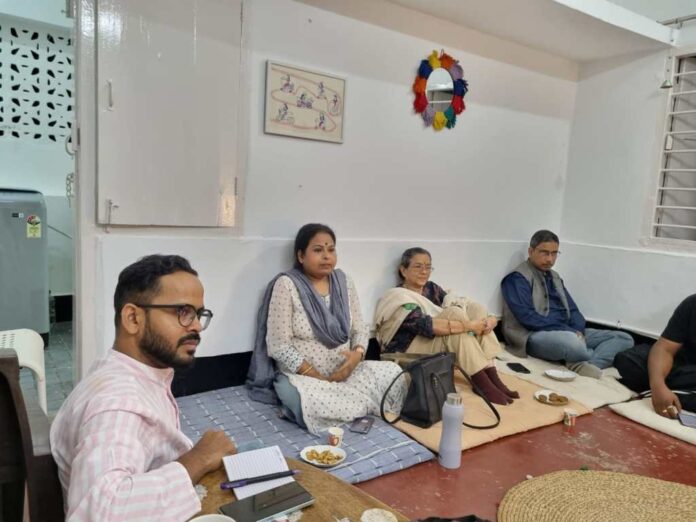Bhubaneswar: The fourth edition of Odisha Manaska, organized by All Things Odisha at the Safe Odisha for Her (SFH) headquarters, hosted an intimate and thought-provoking discussion on the theme of “Maritime History and the Construction of Odia Identity.” The event brought together participants from diverse backgrounds who shared their lived experiences, insights, and recommendations to preserve and promote Odisha’s rich maritime heritage.
The dialogue underscored the pride Odias feel in their maritime past while addressing the challenges of historical erasure and a waning connection with this legacy. Participants explored how Odisha’s maritime history intertwines with its cultural identity and emphasized the need for intergenerational knowledge transfer to bridge gaps in understanding.
Odisha’s Maritime Prowess: A Forgotten Legacy
Odisha’s historical trade routes connected the Mahanadi and Bay of Bengal to regions like Bali, Java, Sumatra, Malaya, and Sri Lanka. These vibrant exchanges fostered cultural, culinary, and economic ties. Despite this illustrious past, Odisha’s maritime history remains under-documented, with fragmented accounts surviving through oral traditions rather than formal records.
Cultural similarities—such as the shared concepts of Sthan, Kala, and Patra (Place, Time, and Person)—highlight Odisha’s global influence. However, experts lamented the lack of research and education on this topic, calling for systematic documentation and dissemination.
Bridging Regional and Educational Gaps
A recurring issue highlighted was the uneven recognition of maritime traditions across Odisha. While coastal regions celebrate festivals like Boita Bandana and Bali Jatra, the western parts are less familiar with these traditions. Despite recent efforts to popularize maritime heritage in western Odisha, the disparity reflects the need for more inclusive celebrations.
Participants also noted the absence of maritime history in educational curriculums. Integrating this legacy into school syllabi—both in Odia and English—could inspire younger generations to take pride in their heritage. Stories like the folk tale of Tapoi were recommended as tools to blend folklore with historical learning.
Rivers as Cultural Lifelines
Rivers like the Mahanadi, once vital trade arteries, now face threats from pollution and neglect. The forum called for transforming cultural celebrations like Boita Bandana into platforms for ecological action, emphasizing the importance of river conservation in preserving Odisha’s maritime legacy.
Pathways to Reclaim Odisha’s Maritime Identity
The event concluded with a call to action, proposing six key strategies:
- Curriculum Integration: Include Odisha’s maritime history in school and college syllabi to inspire pride and awareness.
- Reimagining Bali Jatra: Use the iconic Bali Jatra festival to create immersive experiences showcasing ancient trade routes and cultural exchanges.
- Systematic Documentation: Publish and digitally archive Odisha’s maritime history for global accessibility.
- Promoting Research: Encourage interdisciplinary studies to uncover overlooked aspects of the state’s maritime past.
- Building Public Awareness: Leverage community platforms like Odisha Manaska to advocate for heritage preservation.
- Linking Ecology with Heritage: Use maritime-themed festivals to promote river conservation and sustainable practices.
Conclusion
Odisha’s maritime history is more than a narrative of trade; it is a symbol of cultural pride and global influence. Reviving this legacy through education, celebrations, and conservation efforts can help Odias reconnect with their roots and inspire future generations to cherish and preserve their heritage.
As Odisha Manaska participants emphasized, reclaiming this past is not just about honoring ancestors but about shaping a stronger and prouder Odia identity for the future.

